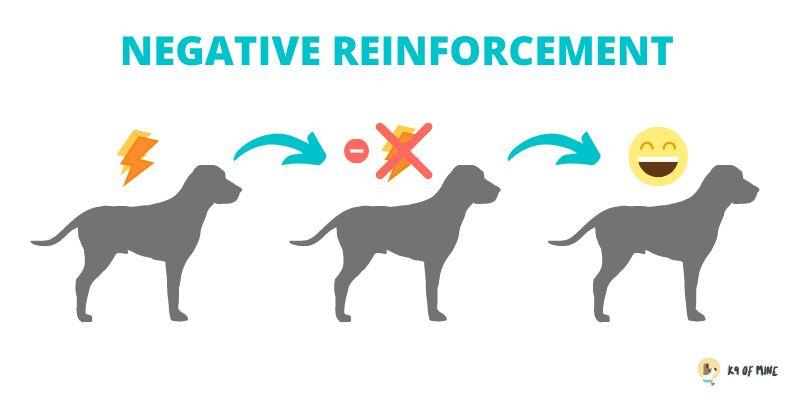Gouves Club members’ monthly e-mag
PAWS FOR THOUGHT
Ways to train a dog: Part 1
July 2023

Dogs at Work: Saving lives at sea!
Shelter situation
Can dogs eat mangoes?
…plus all our regular features… and more!





Meet Lima, a big-hearted female dog born in 2018. Energetic and loving, she arrived at the shelter in 2021. Seeking an active family, she requires
Betty is one of our older ladies and she is waiting desperately to find a home for her golden years. She is amazing old girl and deserves the best in life!








We’re so happy to have you in the Gouves Shelter Members’ Club! You’re support will make a real difference.
The aim of the club is to build up a regular income so that our volunteers are able to focus on the well-being of the animals and the long term improvement of the shelter facilities.
Anyone sponsoring one of our dogs or cats is automatically enrolled in our club, but it’s also open to anyone else who can contribute a minimum of 5 Euros per month.
In return, you receive our monthly online magazine, packed full of news and information from the shelter, interesting articles and members offers.
Because the magazine is created by volunteers – and with zero costs - we can guarantee that 100% of your donation goes directly to the shelter.
From everyone at the shelter, –THANK YOU!




4 SHELTER SITUATION
Let’s take deep dive on the Education project we plan to implement once the new animal welfare center is build:
An Educational Initiative for Community Impact
By delivering tailored workshops, presentations, and developing resources, the program is dedicated to raising awareness, empowering individuals to make informed decisions, and engaging communities in meaningful conversations around animal welfare. This collaborative approach involves partnering with schools, community groups, government agencies, and businesses to address animal welfare issues in a multi-faceted, sustainable way. Primarily run on a volunteer basis, this initiative is less about financial side and more about making a lasting, positive impact on animal welfare and community engagement. The program’s educational efforts focus on a few key benefits. Through workshops, presentations, and resources, the public gains a deeper understanding of what responsible pet ownership entails and why animal welfare is essential. By instilling compassion and empathy, these sessions aim to improve societal attitudes toward animals. An emphasis on the importance of regulations means that education will foster advocacy for more robust laws to protect animals. People empowered by knowledge tend to make better-informed decisions about pet ownership, creating healthier and happier relationships between pets and their owners. Additionally, by involving schools, community groups, and various organizations, the initiative cultivates a sense of shared responsibility for animal welfare, encouraging community-wide support and engagement.
THE SHELTER IN NUMBERS
• 180 dogs currently at the shelter
• 90 cats currently at the shelter
• More than 40 dogs rescued last month
• More than 58 emergency treatments at the vet
• 200 dogs and 250 cats fed, and taken care of, every single day!
Central to the initiative are various features, including workshops and presentations that cover a range of relevant topics such as responsible pet ownership, animal welfare laws, and the need for empathy. These sessions are designed to be informative and engaging, catering to audiences of different ages and backgrounds. To supplement these discussions, educational materials such as brochures, videos, and online resources are developed to provide easy access to accurate information. The program also offers hands-on learning experiences, allowing participants to visit an animal welfare center. This interaction provides a tangible experience that reinforces theoretical knowledge and strengthens the connection people feel toward animals. Another critical aspect is advocacy. The initiative seeks not only to educate but also to inspire societal change through advocacy efforts, ultimately aiming for a community where pets and other animals live in harmony with humans.


The initiative’s timeline outlines a phased approach to achieving its goals. In the first year, a team of dedicated volunteers and stakeholders is assembled, educational materials are developed, and partnerships are formed. Initial outreach efforts begin, and advocacy campaigns are launched to promote animal welfare awareness and legislative change. In subsequent years, the initiative expands its reach, enhances its resources, and strengthens advocacy efforts, building a community network and generating momentum for change. By the third year, the program will have a diverse range of partnerships, with a strong emphasis on training community members to lead workshops independently, increasing sustainability. By year five, the initiative will have developed a solid online presence, initiated research efforts, and encouraged youth involvement, setting the foundation for long-term growth and sustainability.

Different ways train a dog:
Part 1

Just like humans, different pooches learn in different ways. This means that not every training method works for every pup parent, situation, or end goal. Fortunately, there are various different dog-training approaches you can employ when trying to teach your pup skills and instil good habits.
Finding the right training approach that balances all aspects can be a challenge, but the results are well-worth the effort. In this series of articles, we’ll explore the different methods, starting this month with the first two methods: Classical Conditioning and Operant Conditioning.
Classical Conditioning
Classical conditioning is the learning theory made famous by Pavlov and his doggos. Russian physiologist Pavlov experimented by ringing a bell as he fed his dogs. Over time, the dogs began to associate the bell with feeding time. Eventually, upon ringing the bell, the dogs would begin to drool, even if the food was not given.
The lesson? Pavlov was able to get his dogs to react to a stimulus they had not previously reacted to. Before the experiment, the dogs has not reacted at all to the sound of the bell. But now, through creating reinforced associations, the bell alone would illicit a reaction.
In classical conditioning, an outside stimulus (such as a sound, smell, or sight) triggers a reaction in the subject that they would not normally have, due to the association built previously. Some real-life examples of classical conditioning include:
• PTSD, with loud sounds triggering panic due to their association with a battle environment.
• Adog barking when they hear the doorbell, since they have learned that a doorbell ringing means a stranger has arrived.
• My dogs getting excited when I put a jacket on, because they know a walk will soon follow.


Operant Conditioning
Operant conditioning is slightly more complicated and deals with encouraging or discouraging certain actions. Whereas classic conditioning revolves around involuntary associations, operant conditioning is about giving the subject choices.
There are four quadrants to operant conditioning, which include:

For dogs, this means rewarding a them whenever they display a wanted behavior, such as giving a dog a treat for lying down quietly while you work at your desk, or grabbing a toy for a tug-of-war session when your dog chooses not to bark at the delivery van.
Positive reinforcement has been proven to be very effective and is the most popular and widely recommended method for teaching a dog cues and behaviors.
Positive reinforcement involves only rewarding the behavior you like and simply ignoring unwanted behaviors. Eventually, your dog learns to increase the desired behaviors and dial back on the unwanted behaviors, since the dog knows desired behaviors will result in fun, food, and freedom.



Whilst we often associate the term “punishment” with violent action or scolding, negative punishment doesn’t involve any reprimanding. Instead, a desired element is simply taken away.
This is widely considered the 2nd most effective form of operant conditioning. Some examples of negative punishment include:
Removing yourself from the area when your dog bites or bark at you (it helps to have gates that you can use to keep yourself isolated from the dog. After all, your presence alone is a reward for your dog, since dogs are social creatures)! Turning away or exiting when your dog jumps up on you
Removing a dog from a play area when they play inappropriately with other dogs
The goal with negative punishment isn’t just to punish your dog, but also force them to try a different behavior you might like more.

For example, if your dog nips at you in order to get play and attention, you would remove yourself from the area. When your dog then decided to pick up the toy to play with instead, you would reward the dog by engaging in play with them and the toy.

Whilst we often associate the term “punishment” with violent action or scolding, negative punishment doesn’t involve any reprimanding. Instead, a desired element is simply taken away. The term “positive” can be confusing here, but what it really means is that you are introducing an undesirable element as punishment – hence the “positive”.
It helps to think of the quadrant in terms of maths. Negative punishment involves removing something (taking away something desirable), while positive punishment involves adding something (pain or unpleasant sensations).
Some examples of positive punishment include:
• Shocks emitted by an electric collar
• Hitting a dog
• Using a chain or prong collar
• Yelling or scolding a dog

Positive punishment has largely been rejected by modern, educated dog trainers due to its ineffectiveness and potential to backfire. Using positive punishment can erode your dog’s trust in you and severely damage your relationship.
Positive punishment has been shown in studies to elevate stress levels (compared to positive reinforcement methods), increase aggression in some dogs, and can physically injure a dog as well.
4. Negative Reinforcement
Negative reinforcement involves removing a painful of unpleasant element when the their fear of being punished without understanding why. Examples of negative reinforcement include:
• Pinning a dog down and keeping them there until they stop growling
• Shocking a dog until they return to their yard
Of course, we can discount this type of training straight away!
Next month we will continue to investigate the various alternative dog-training methods.




Nefeli’s Story
Words of wisdom from a chubby and happy rescue…
Training a shelter aid dog
Ever since I was adopted my life was filled with training, shows and doing tricks with many different people. I absolutely love the kisses I get to give, the pets and adoring words I hear and the smiles and gasps of excitement the audience gives when I do my thing. I also love the adventures the training takes us to, I never know if we end up in the forest or a field or in a big conference hall filled with people.
Now that I have retired I don’t do the actual work so much, but I do spend a lot of time training new ones and being an example to them. And right now we have embarked on a new adventure, training a dog that can help rescue people. Of course I already know how to rescue missing people, but what about helping to rescue animals?
Basically the same thing, but what if the animal doesnt want to be found, get’s on a sticky place or runs away?

According to the plan me and mom did, and after trying few different things, we think we have an idea. Combining herding, search and rescue work and of course obedience.
Since I am retired I’m not going to be the one doing the job, but since we are training a youngster to do it, I might as well show how it’s done and learn few new things at the same time. The puppy is only 5 months old, but already getting along nicely with the obedience part and I showed her few times how to do tracking from the ground and she seems to pick it up nicely. I can’t wait to see how things will progress in the next year!


Born: 2013
Time at shelter: 6 months
Adopted: 2013
Passion: Food Goals in life: To spread happiness and love and to kiss as many noses as possible.
Nefeli is a full breed Greek Tail Wagger, and the most positive dog you could wish to meet. She has travelled to more than 10 countries doing tricks in dog shows and expos, spreading the sentiment: “Adopt, don’t shop”
.
While what we do might not help many, the important things it that it might help even one animal. Someone difficult to catch, to get to the vets and to save before its too late. Anything we can do to try and help is worth it. We are already planning the trip to Crete to check how everything works in action and I can’t wait to see all my friends. Although I was adopted more than 10 years ago, I never forgot the people who rescued me or the place that offered me a new chance. And this time I get to show it to someone who has no idea what life can be for a stray animal.
Effort
to helping others is always worth it, even if you only save one
Fiete, you stole many hearts and left a big paw mark on all of them. We miss you so much.















14 Can Dogs Eat Mango?

There’s nothing better than tucking into a sweet, juicy mango to help quench your thirst on a hot summer’s day. While you’re tucking into this tropical fruit, you may notice you’re being watched by your four-legged friend with their best begging face pleading for a share. But can dogs eat mango?
YES, THEY CAN !

Ideas for Mango Treats.


Frozen mango chunks: Wash the mango thoroughly, peel, remove the stone and cut into chunks. For smaller breeds cut the chunks quite small –although the soft flesh does to tend to be easy for them to eat.
Mango smoothie: Blend some chunks of frozen mango, some raspberries, ice, water and Greek yoghurt. Spoon into your dogs bowl.
Mango and pineapple sorbet: Blend ½ cup of mango, half a cup of pineapple and half a cup of water. Freeze and serve!
How good are mangoes for dogs?
Mango contains essential vitamins such as B6,A, C and E, which are good for dogs. Mangos also contain a lot of fibre and if your dog isn’t used to this, it may cause them an upset stomach and result in issues like diarrhoea.
Additionally, fruits which are very high in sugar can contribute to tooth decay, so make sure they are only given as an occasional treat! As a good rule of thumb, serve no more than one-quarter cup of fresh mango periodically.
IMPORTANT!


You should only allow your dog to eat the flesh of a mango.The stone is a potential choking hazard and contains small amounts of cyanide!The skins are difficult to digest and can cause digestive problems.
DOGSAT WORK: Saving lives at sea!
Believe it or not, in Italy, an elite squadron of 350 specially-trained canines from the Italian School of Water Rescue Dogs (Scuola Italiana Cani Salvataggio, or SICS) has successfully been patrolling the beaches, working as lifeguards.
300 SICS units, consisting of one dog and one trainer, are tasked with watching over approximately 30 of the country’s busiest beaches.Thanks to their willingness to perform, strength, and fearless exploits—including leaping from helicopters into the surf below to rescue at-risk swimmers—an average of 20-30 lives are saved annually by the doggie guards, and that number continues to climb each year.
The SICS program is the brainchild of 59-year-old Ferruccio Pilenga, who got the idea that dogs would make excellent lifeguards back in 1989 from watching his own Newfoundland, an immensely powerful swimmer named Mas.
“He pulled a water-filled dinghy with three people on board for half an hour,” Pilenga toldTheTimes of London. “Ahuman cannot do that.”
The SICS program is an arduous one.After 18 months of basic training, only those dogs successfully completing the required steps are deemed ready to move on to the more intensive aspects of lifesaving techniques, such as jumping from helicopters and leaping from speeding boats.
SICS teams are recognized for being especially effective in the face of large-scale life or death scenarios.Thanks to their special training, they’re better able to carry out the simultaneous rescue of multiple swimmers in situations where the capabilities of one or two lifeguards might be easily overwhelmed.





SICS teams are recognized for being especially effective in the face of large-scale life or death scenarios.Thanks to their special training, they’re better able to carry out the simultaneous rescue of multiple swimmers in situations where the capabilities of one or two lifeguards might be easily overwhelmed.
While the success of the program can be partially attributed to the dogs’acutely attuned survival instincts that help them find the safest route to shore, as well as their stamina and ability to follow commands, Pilenga believes the emotional component they bring to their work cannot be underestimated.
“The presence of the dogs helps to lighten up the situation. The biggest reward is the emotion that the dog and the owner feel at the moment of the rescue, which further unites that special bond between dog and human.”
Italy is currently the only country to recognize certified canine lifeguards, but training centers are being set up for dogs in the U.S., Germany, Switzerland, and theAzores, with SICS eager to spread its safety net to encompass wider waters across the world.
Although many different dogs can learn these rescuing skills, the Newfoundland breed is a popular choice because both their strong build and water-resistant outer coat of fur makes them well-equipped for the job.
Just when we thought dogs couldn’t be any more awesome! How amazing is that!





WHAT’SYOUR DOG’S BREED?
Many rescue dog owners would love to know what kind of mix created their beloved friend – and now with this fabulous members-only offer, we can help!
Embark, the leading dog DNAtesting company, has agreed to cooperate with us and give all our club members a fantastic discount!
To claim your $20 discount, use voucher code PUPS20 at checkout.
We’re sure you’ll be fascinated by the results. If you have a dog from our shelter, please share your results with us. We’d be fascinated too!

MEMBERSHIP UPDATE


Currently we have 351 Club Members, bringing us in 3423 Euros per month. This amount of money enables us to feed around 171 animals!
To feed the shelter costs around 4000 Euros each month and this year we’d really like to gain as many members as possible, since it is the best way to provide a steady income.
Many dogs have sponsors, but for those that don’t, your support makes is possible to feed more of those waiting for sponsors and homes.

Thank you for supporting Gouves Shelter!

OUR MISSION & 2023 GOALS


The long term goal of any animal shelter should be to close down. Our dream is to live in a world where all pets have responsible owners who neuter them so that one day, there will be no more strays.
We believe that the key lies in educating the current and the next generation of pet owners, and in neutering programs.
Until we reach that goal, our aim is to be financially secure enough to be able to help every sick, injured or abandoned animal that finds it’s way to our gate and to provide the best care possible to all animals at the shelter until we can find them the good homes that they all deserve.
OUR 2023 PLANS FOR THE SHELTER ARE:
Secure finances for the animals that are in our care, so that when the time comes to move, we can afford to keep helping as many as possible.

DOG OF THE MONTH
Betty : Female : 9 years : Great : Usually great : Not tested

Health issues: None
Meet Betty, a gentle soul with a calm and loving spirit who was born around 2015. This medium-big lady has spent her life knowing the comforts of a home, and her calm nature speaks of a dog who understands the rhythm of life indoors. Betty is the kind of dog who embodies grace and loyalty, with no known health issues to hold her back from enjoying life. Her past as a companion shows in her easygoing demeanor, as she knows how to settle in and become part of a family.
Though she’s a bit older, Betty still has a surprising zest for life. She loves to take walks, explore the outdoors, and play with those she trusts. Her energy is perfectly balanced; she’s lively enough to join in on adventures but gentle enough to lounge peacefully by your side when it’s time to relax. Betty’s personality is warm and open, always ready to share quiet moments or enjoy a stroll. Her years may have gifted her with wisdom, but her spirit remains young and vibrant, making her an ideal companion for anyone seeking a dog with both experience and playfulness.

In terms of other animals, Betty is well-behaved and gets along well with other dogs, provided they’re respectful of her calm and gentle nature. She has a preference for polite canine friends and doesn’t appreciate pushy behavior, showing that she values kindness and mutual respect. Her reactions to cats and children haven’t been tested yet, but her mild temperament suggests that she could adapt well with the right introduction.
Betty doesn’t come with any special requirements, just a need for love, companionship, and a peaceful environment where she can finally relax and be herself. She’s patiently waiting for her forever family, and her time at the shelter has only made her more eager to find a place where she can feel truly at home. For anyone looking to welcome a loyal, gentle, and balanced dog into their lives, Betty could be the perfect addition. She’s a dog who will repay kindness with loyalty, and her warm, wise eyes promise a lifetime of companionship.
Betty’s journey has been one of patience and resilience, and she’s now ready to start a new chapter filled with love, warmth, and happiness. With her calm demeanor, affectionate nature, and readiness to bond deeply, she would be a wonderful companion for someone seeking a sweet and steady friend. If you’re ready to give Betty the second chance she deserves, you’ll be rewarded with her unwavering loyalty and countless moments of joy.
KEEPTRACK OFYOUR DOG WITH OUR FANTASTIC MEMBERS ONLYOFFER!
We’re delighted that Gouves Shelter Club members are eligible for a whopping 15% discount offTractive GPS tracking devices!
Never worry about your dog getting lost again, since you can track their every movement! WithTractive you can see immediately where your dog is going with your smartphone!
I can honestly say that since we got our tracker for our Cretan rescue dog, Rozi, we have been so much more relaxed with her on her walks. Even when she catches the scent of something and disappears, we know we will find her using the really user-friendly app.
It even lets us see where she is when we’re not at home – just to make sure she’s still there – and there’s a handy buzzer you can activate to help locate your dog when you can’t see them.
Just go to tractive.com and use the voucher code GSCP15 to get your 15% discount – and some peace of mind.


TenAmazing Dog Facts

Think you know everything you need to know about dogs? Try out these ten facts – how many did you know?
1. There are more than 150 dog breeds, divided into 8 classes: sporting, hound, working, terrier, toy, non-sporting, herding, and miscellaneous.
2. According to a recent survey, the most popular name for a dog is Max. Other popular names include Molly, Sam, Zach, and Maggie.
3. Dogs can vary in size from a 36 inch (150+ lb.) Great Dane to a 2 lb. Chihuahua.
4. Puppies and kittens can be adopted as early as 8 weeks of age. Until then, they should stay with their moms and littermates.
5. About 1/3 of the dogs that are surrendered to animal shelters are purebred dogs. 6. Contrary to popular belief, dogs do not sweat by salivating. They sweat through the pads of their feet.
7. Dogs may not have as many taste buds as we do (they have about 1,700 on their tongues, while we humans have about 9,000), but that doesn’t mean they’re not discriminating eaters. They have over 200 million scent receptors in their noses (we have only 5 million) so it’s important that their food smells good and tastes good.
8. Toto’s role in The Wizard of Oz was actually played by a female Cairn Terrier named Terry.
9. Former US President Teddy Roosevelt had a Pit Bull named Pete.
10. An adult dog has 42 teeth.

YAPPY EVER AFTER!
Sunny was adopted by a lovely family and is now living the dream <3 This is what this beautiful girl deserved and we cant wait to see what kind of adventures she gets into!


